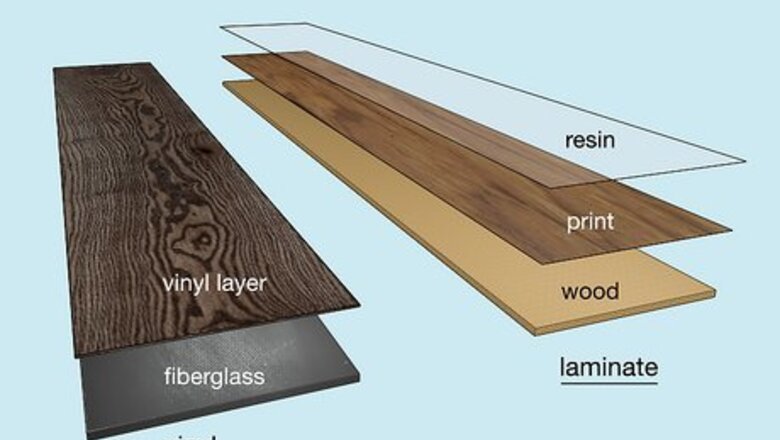
views
- Laminate is made by printing an image on a wood core and then sealing everything in resin. Vinyl is made with layers of compressed fiberglass.
- Vinyl is waterproof while laminate is not. While both materials are durable, vinyl is a lot easier to care for in the long run.
- Vinyl and laminate are both relatively cheap and easy to install.
- The major upside for vinyl is that it holds up really well, while laminate’s selling point is that it usually looks a lot more expensive than it is.
What's the difference between vinyl and laminate flooring?
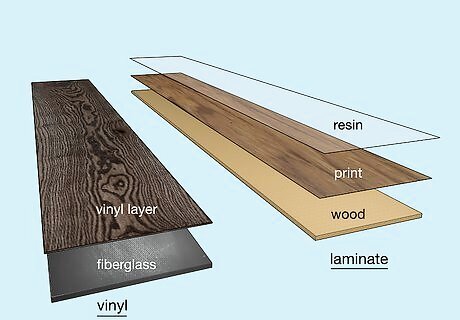
Vinyl is made from fiberglass, while laminate is plastic sealed in resin. Vinyl has a fibrous backing sheet usually made of fiberglass underneath a vinyl layer. Laminate flooring is manufactured by taking an inner core of wood byproducts and then sealing them in a plastic resin. An image is printed in between the resin and the wood so the laminate resembles wood, stone, tile, or ceramic. High-end vinyl flooring, often called “luxury” vinyl flooring (often abbreviated as LVP), can be nearly indistinguishable from real wood planks. Higher-end laminate can be embossed with ridges and grooves to make it look like hardwood.
Appearance
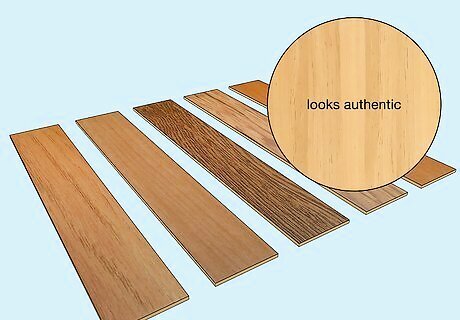
Laminate is high quality and tends to look more authentic. Due to the plastic resin layer on top of the printed image, laminate usually looks a little more dynamic and visually coherent than vinyl. While the quality difference isn’t usually going to be gigantic, laminate will look slightly better than vinyl at a comparable price point. Laminate flooring is also a lot more sustainable than vinyl.
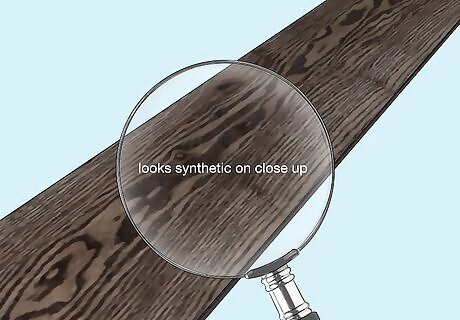
Vinyl can look a little synthetic if you don’t get LVP. Luxury vinyl planks look just as good as decent laminate flooring, but are a lot more expensive. Outside of LVP though, you’ll typically be able to tell vinyl isn’t real wood. It won’t look bad necessarily, but it’ll be clear it’s a synthetic floor if you look closely enough. Super high-end vinyl is probably going to look a lot better than cheap laminate. Both materials come in basically any color, texture, style, and grain you could possibly imagine, so don’t get married to one material over the other due to the visual appearance of a specific product.
Feel
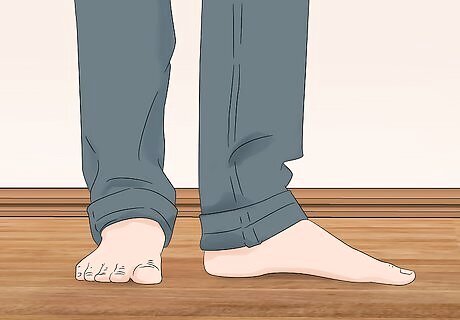
Laminate is a softer material with a comfortable give. If you prefer walking on soft surfaces in your home, laminate flooring is probably ideal for you. The plastic layer on top of the image gives the laminate a cushion that vinyl doesn’t have, so it’s a little more comfortable to walk on if you’re barefoot.
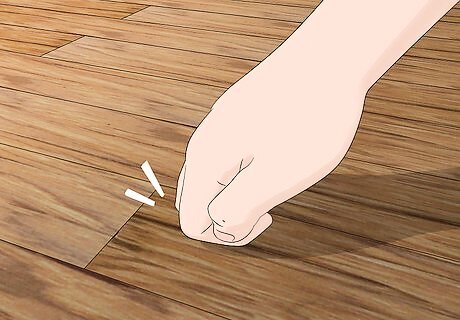
Vinyl has a tougher, stiffer feel comparable to hardwood. Due to the fibrous backing (usually fiberglass), vinyl planks are hard. That may not necessarily be a bad thing, though. If you’re trying to replicate the feel of genuine hardwood flooring, vinyl is probably going to be better than laminate. It may not be as comfy, though! Both vinyl and laminate can be manufactured with an embossing to make them mimic real hardwood.
Cost
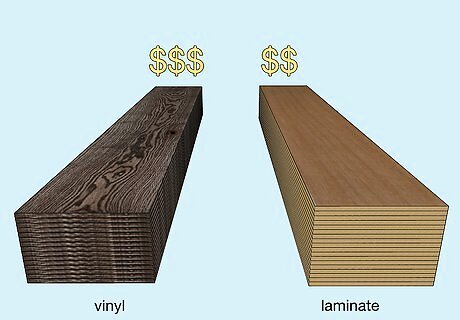
Laminate is cheaper than vinyl, but not by a lot. Unless you get really high-end laminate flooring, you’re unlikely to notice much of a difference on the cost front, although laminate will barely beat out vinyl most of the time. On the low end, laminate can run 80 to 90 cents per 1 sq ft (0.093 m), but the higher quality stuff can be up to $3 per1 sq ft (0.093 m).
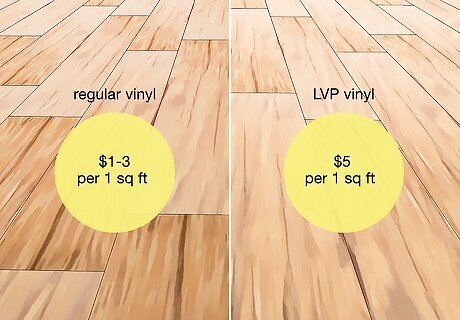
Vinyl is relatively cheap unless you opt for LVP. Vinyl planks require a subfloor while laminate can simply be installed on top of whatever wood or tile you’re replacing, so vinyl might be a little more expensive there, but it’s not going to be a big difference. However, luxury vinyl planks will run the bill up if you’re installing a lot of it. Regular vinyl can run $1-3 per 1 sq ft (0.093 m). Higher-end vinyl (aka luxury vinyl planks or LVP) can cost up $5 per 1 sq ft (0.093 m).
Care and Cleaning

Laminate is more difficult to care for. Laminate has a wood core in the middle. If laminate gets wet, it swells up and turns soft. You can only use a dry mop or cloth to clean it, and you have to clean up liquid spills ASAP. It’s not impossible to keep clean, but it’ll definitely require a little extra effort.
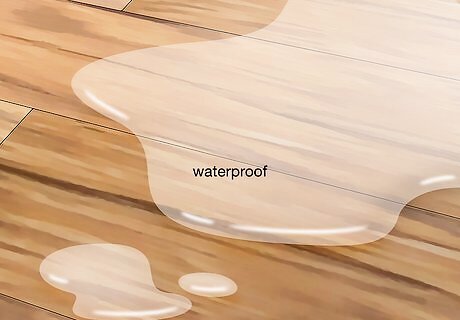
Vinyl can be cleaned with basically any tool at your disposal. Vinyl is 100% waterproof. As a result, you can mop it, wipe it, or wash it whenever it gets dirty. This is actually one of vinyl’s huge selling points—it’s so easy to clean. If you’re looking for easily maintained flooring, it’s hard to do better than vinyl. With that said, both vinyl and laminate will stain if you don’t wipe up spills.
Durability
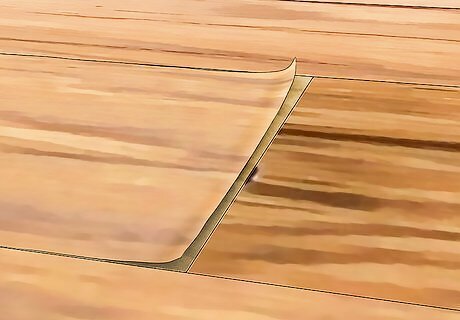
Laminate flooring is a bit more delicate than vinyl. When laminate flooring gets damaged, it tends to flake and peel. This means you’ll have to replace the entire plank (or roll) if an area gets slightly damaged. It can’t get wet, and it’s a softer material too, which means it’s more likely to get dinged up. Laminate planks can last anywhere from 10 to 25 years depending on how much foot traffic the floor gets.
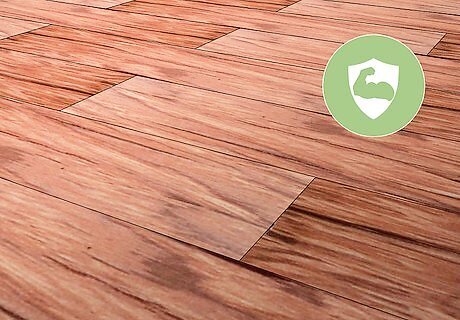
Vinyl is the clear winner when it comes to durability. Vinyl is quite hard, which makes it a lot tougher to chip or damage. In fact, vinyl might be the most durable flooring option out there. If you’re looking for an easily maintained floor, vinyl is probably ideal. Vinyl flooring will typically last around 20 years.
Installation

Laminate and vinyl are equally easy to install. Unless you opt for the adhesive rolls, vinyl and laminate both use a snap-in-place system. The planks fit together and lock in place on the ground. Any flooring contractor will be able to install laminate or vinyl planks, but they’re both pretty forgivable materials if you want to go the DIY route. There are adhesive rolls of cheap vinyl and laminate out there which are installed a little differently, but they’re really out of the question unless you’re on a shoestring budget and you don’t care about the appearance at all.
Which flooring is ideal for me?
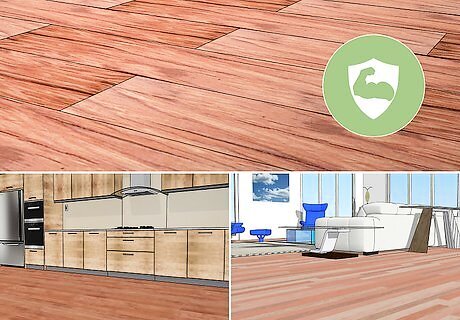
Vinyl is likely your best bet if you want durability and versatility. Since it’s waterproof, you can install vinyl flooring anywhere in your home. It’s easy to care for and it’s not going to give you any headaches when it comes to holding up in the long term. A lot of people also like the fact that it’s kind of hard, since it makes the planks feel like hardwood. You can install vinyl in living rooms, kitchens, basements, bathrooms, hallways, or bedrooms.
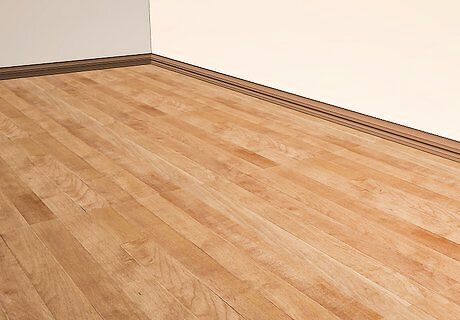
If quality is your main concern, laminate is an attractive option. Due to the way it’s made, high-end laminate flooring is nearly indistinguishable from hardwood. It’s true that it’s a little harder to take care of than vinyl, but if you’re primarily interested in aesthetics, laminate is probably going to take the cake. Luxury vinyl planks (LVP) are also comparable to hardwood, but they’re a lot more expensive than laminate. Laminate can’t be installed anywhere where it’ll get wet. This means it can’t be installed in kitchens, basements with moisture issues, or bathrooms.



















Comments
0 comment